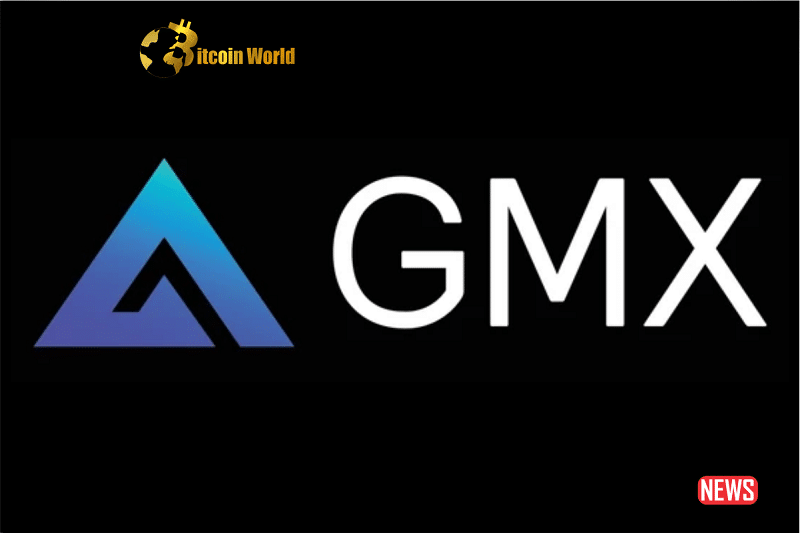Ever wondered what happens when the crypto market experiences a sudden jolt? On June 14th, GMX, a popular decentralized trading platform, provided a real-world example. Buckle up, because we’re diving into a fascinating event: a massive fee surge that saw GMX rake in over $20.7 million in a single day! This wasn’t just any ordinary day; it was fueled by a significant liquidation event that left many GMX token holders feeling the pinch. Let’s break down what happened and what it signifies for the platform and its users.
GMX’s Record-Breaking Fee Day: What Caused the Spike?
Imagine a platform where trading activity suddenly goes into overdrive. That’s essentially what happened on GMX. On June 14th, the platform witnessed an extraordinary influx of fees, hitting a peak of over $20.7 million. To put this into perspective, this surge propelled GMX to become the second-highest fee-generating platform across the entire crypto space on that particular day, according to data from Crypto Fees. Just on that single day, GMX accumulated over $3 million in fees, and even looking at the week leading up to it, the platform averaged over $703,000 daily. Pretty impressive, right?
The Liquidation Cascade: The Driving Force Behind the Fees
So, what was the catalyst for this fee frenzy? According to a report by WuBlockchain, the surge was primarily triggered by a substantial liquidation event on the GMX platform. Think of it like this: when traders’ positions move against them significantly and they don’t have enough margin to cover the losses, their positions are automatically closed out – this is a liquidation. On June 14th, a significant volume of these liquidation transactions occurred within GMX’s on-chain derivatives agreement. The result? A hefty net loss of $8.67 million for traders. And guess who collected a significant portion of the proceeds from these liquidations? You guessed it – GMX, with fees totaling a staggering $3.13 million from this event alone. This clearly highlights how liquidation events can dramatically impact platform fees.
Trading Activity Remains Robust: A Sign of Confidence?
Interestingly, despite the financial sting of the liquidation event, trading activity on GMX remained surprisingly strong. Data from CoinGlass indicates considerable trading volume, with long positions dominating the market. What does this tell us? It suggests that despite the recent setback, many traders still hold a positive outlook on the GMX token’s future price. This resilience in trading activity could be a good sign for the platform’s long-term health.
Decoding the Market Signals: Open Interest and Price Action
Let’s take a closer look at some key metrics:
- Open Interest (OI): On June 14th, the Open Interest, which represents the total number of outstanding derivative contracts, stood at nearly $10 million. By June 15th, it had slightly decreased to around $9 million. This minor dip could be attributed to the liquidations.
- Price Movement: The GMX token experienced a nearly 4% drop in value on June 14th. As of now, the token continues its downward trend, trading around $44, reflecting a further loss of over 1%.
Navigating the Bearish Waters: What’s Next for GMX?
Currently, GMX appears to be navigating a bearish trend. The Relative Strength Index (RSI), a popular indicator used to gauge the momentum of price movements, has placed GMX in the oversold zone. What does this mean? It suggests that the token may be undervalued and could potentially see a price correction in the future. However, it also reflects the current negative sentiment surrounding the token. It’s crucial for traders to be aware of these indicators when making decisions.
Key Takeaways: What Can We Learn from This Event?
- Liquidation Events Impact Fees Significantly: The GMX case vividly demonstrates how significant liquidation events can drive substantial fee generation for platforms.
- Market Sentiment Can Be Resilient: Despite the losses incurred by some traders, the continued high trading volume suggests underlying confidence in the GMX token.
- Understanding Market Indicators is Crucial: Monitoring metrics like Open Interest and the RSI can provide valuable insights into market trends and potential price movements.
Looking Ahead: The Future of GMX
While the liquidation event on June 14th was undoubtedly a significant event for GMX, it also highlights the inherent volatility and risks associated with cryptocurrency trading. Despite the losses experienced by some, the platform’s ability to generate record fees underscores its role as a prominent player in the decentralized finance (DeFi) space. The continued trading activity suggests a belief in the platform’s long-term potential. Will GMX bounce back from this bearish trend? Only time will tell, but one thing is certain: the crypto market is never short of surprises!
In Conclusion: A Day of High Drama for GMX
The events of June 14th serve as a compelling case study in the dynamics of decentralized trading platforms. GMX’s unprecedented fee surge, driven by a substantial liquidation event, resulted in significant losses for some traders but also highlighted the platform’s capacity for high transaction volumes. Despite the current bearish trend, the ongoing trading activity suggests a resilient community. Understanding the interplay between liquidation events, trading volume, and market sentiment is crucial for anyone navigating the exciting yet often unpredictable world of cryptocurrency.
Disclaimer: The information provided is not trading advice, Bitcoinworld.co.in holds no liability for any investments made based on the information provided on this page. We strongly recommend independent research and/or consultation with a qualified professional before making any investment decisions.



